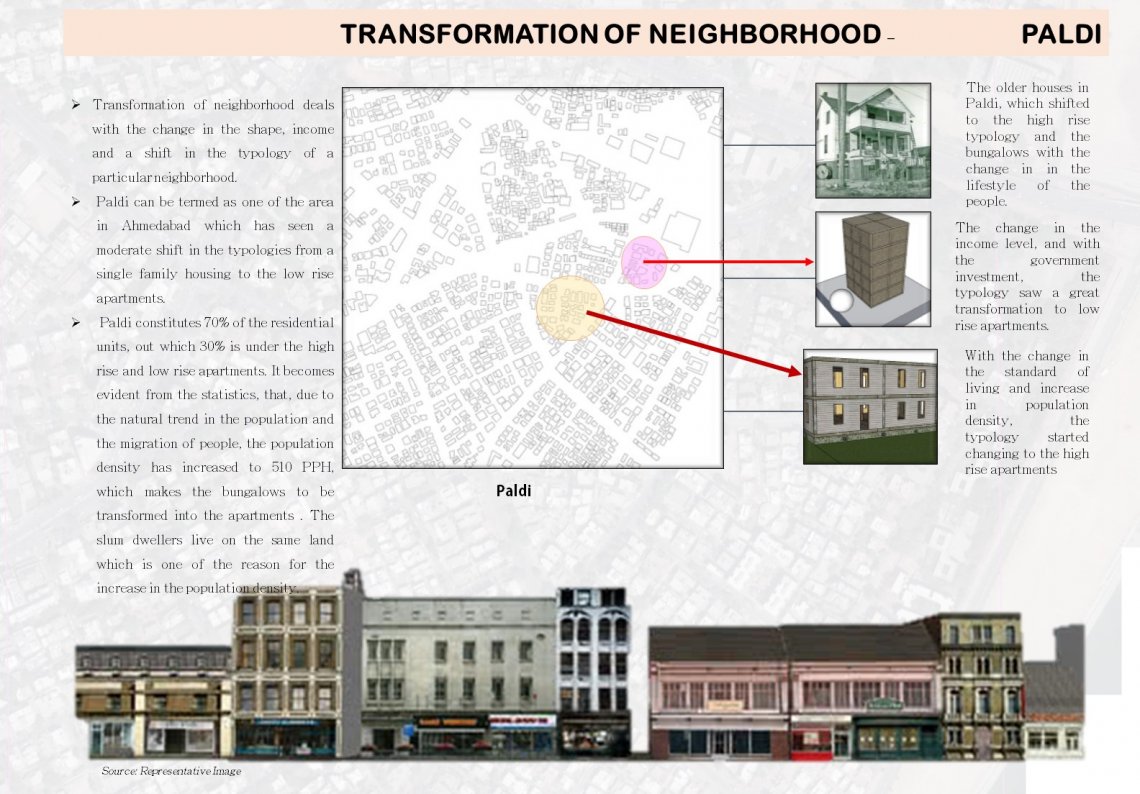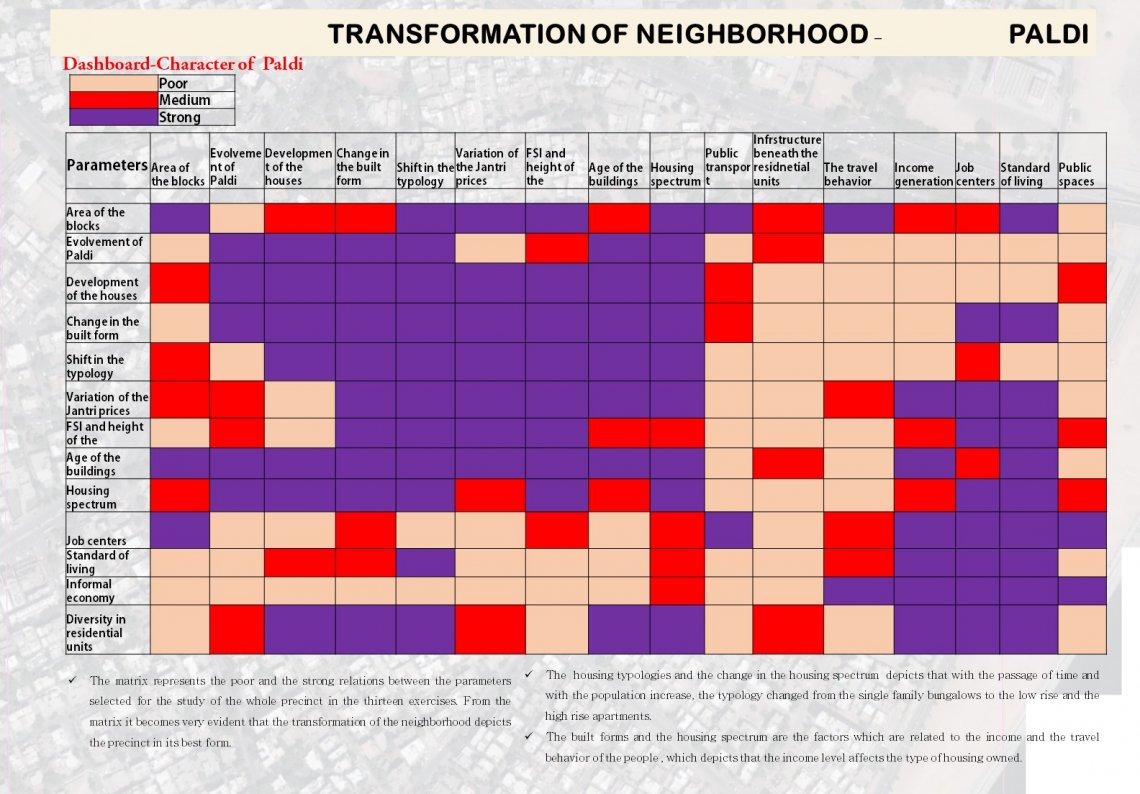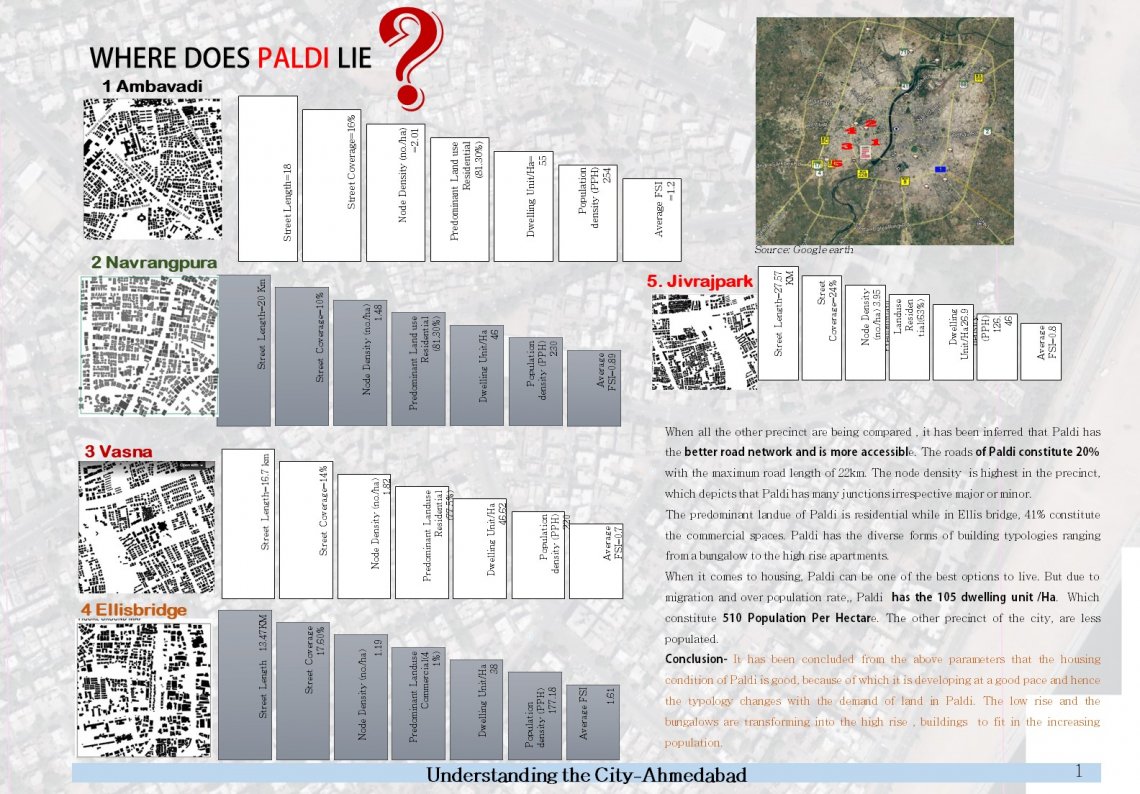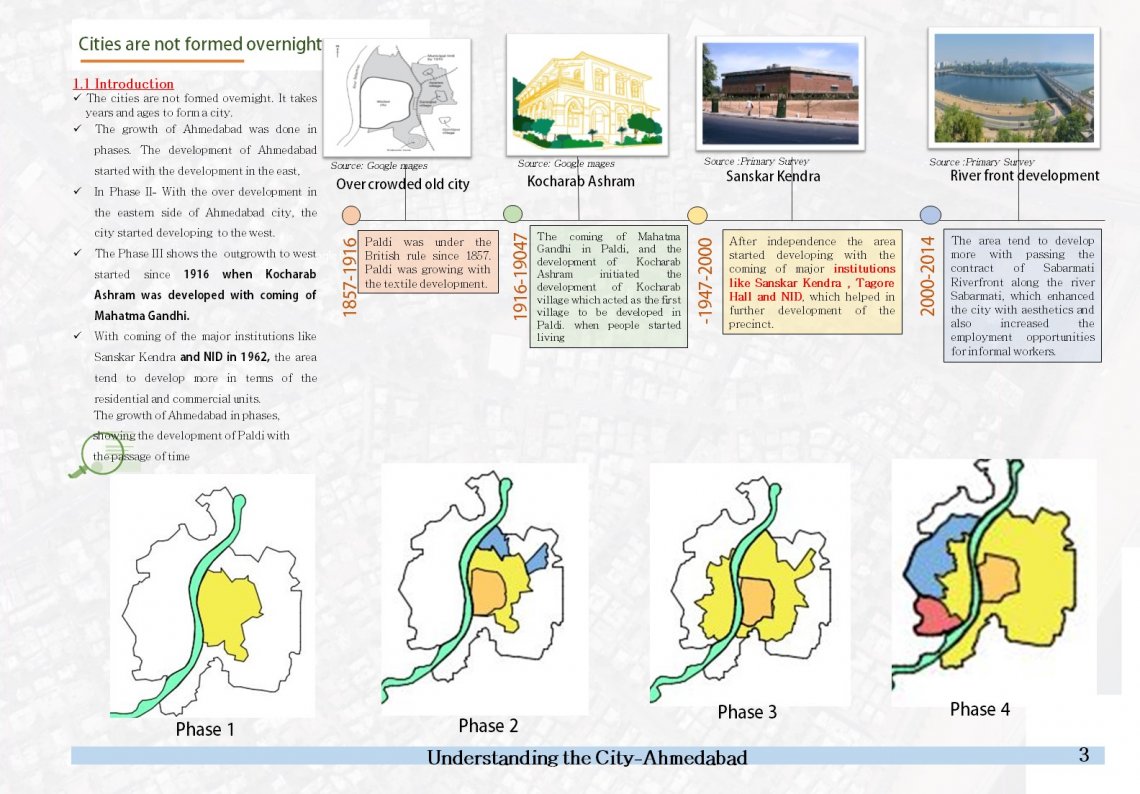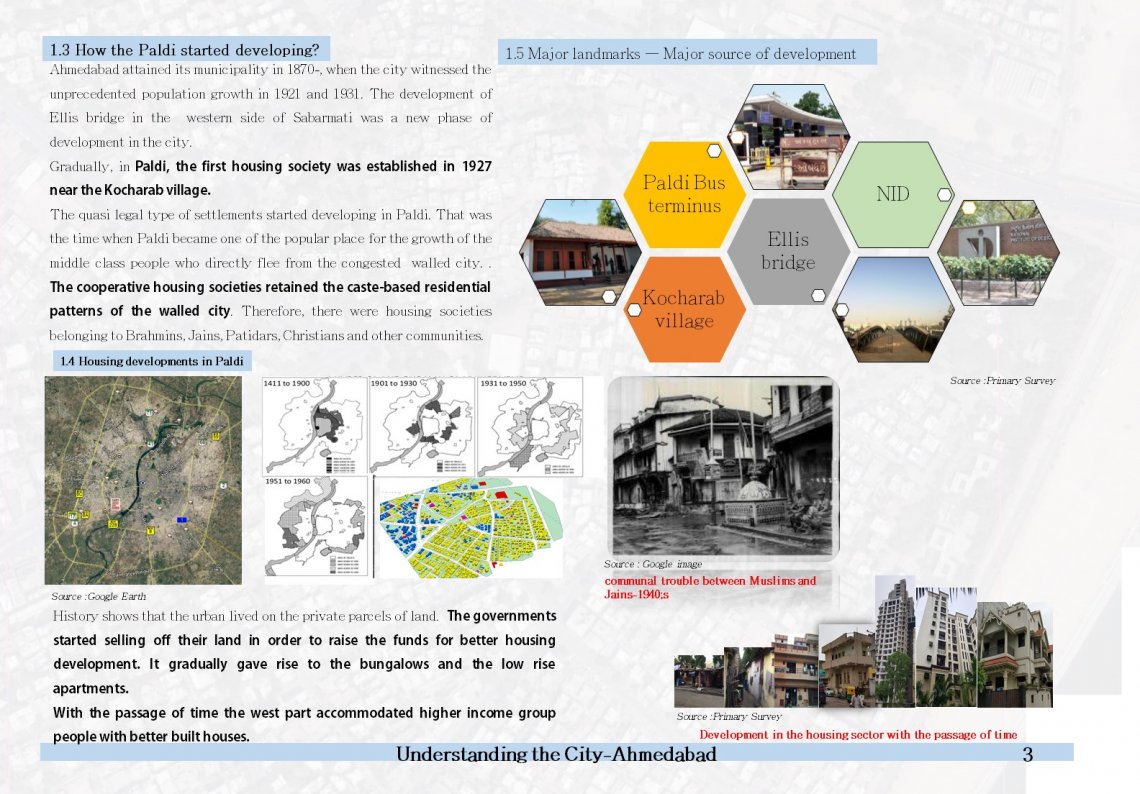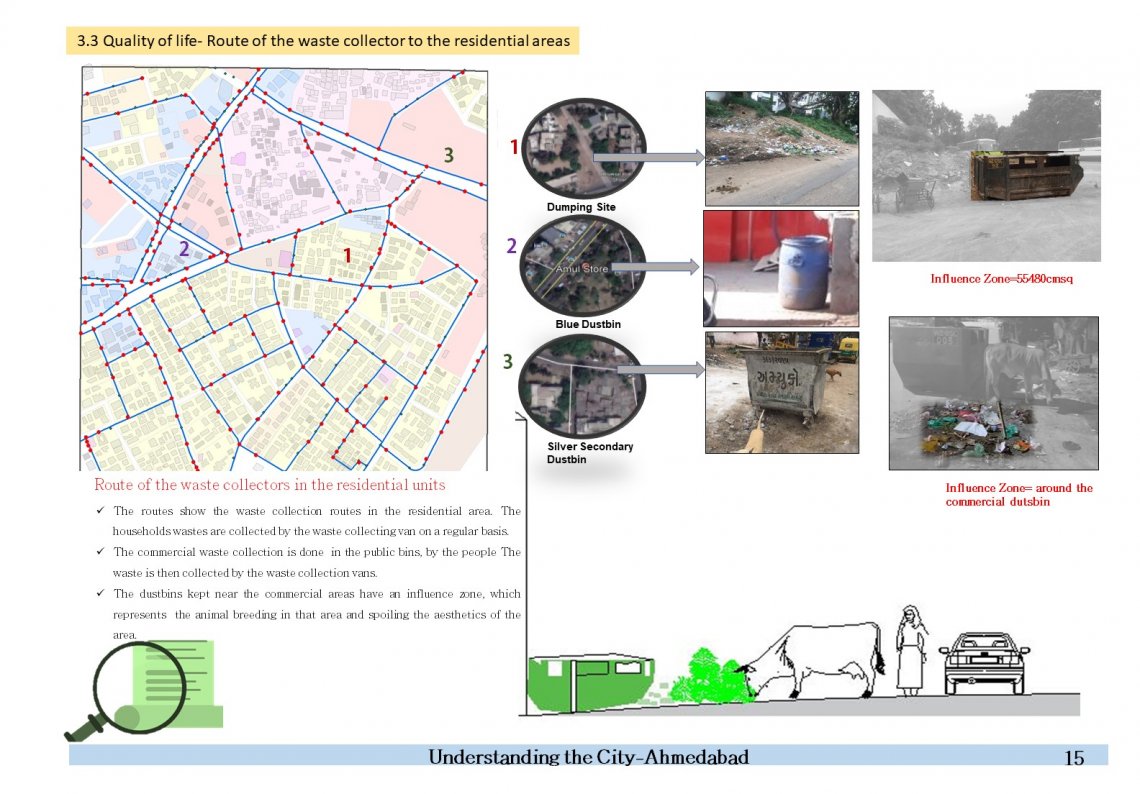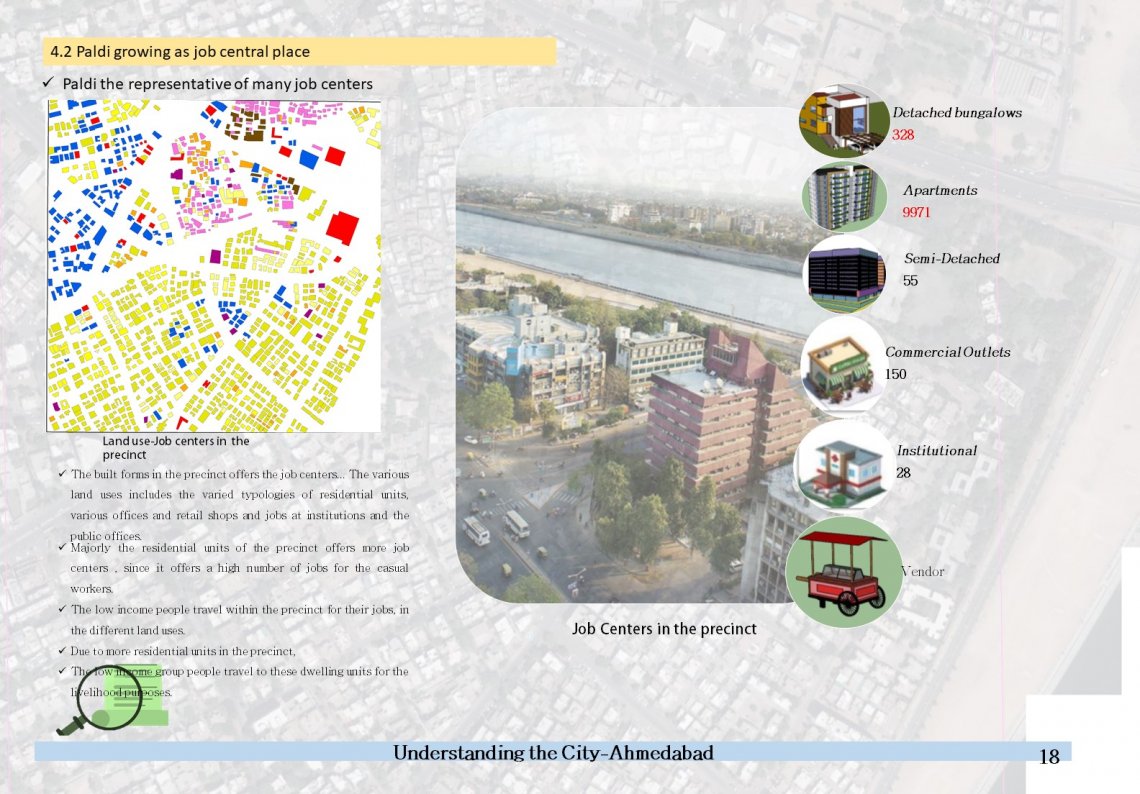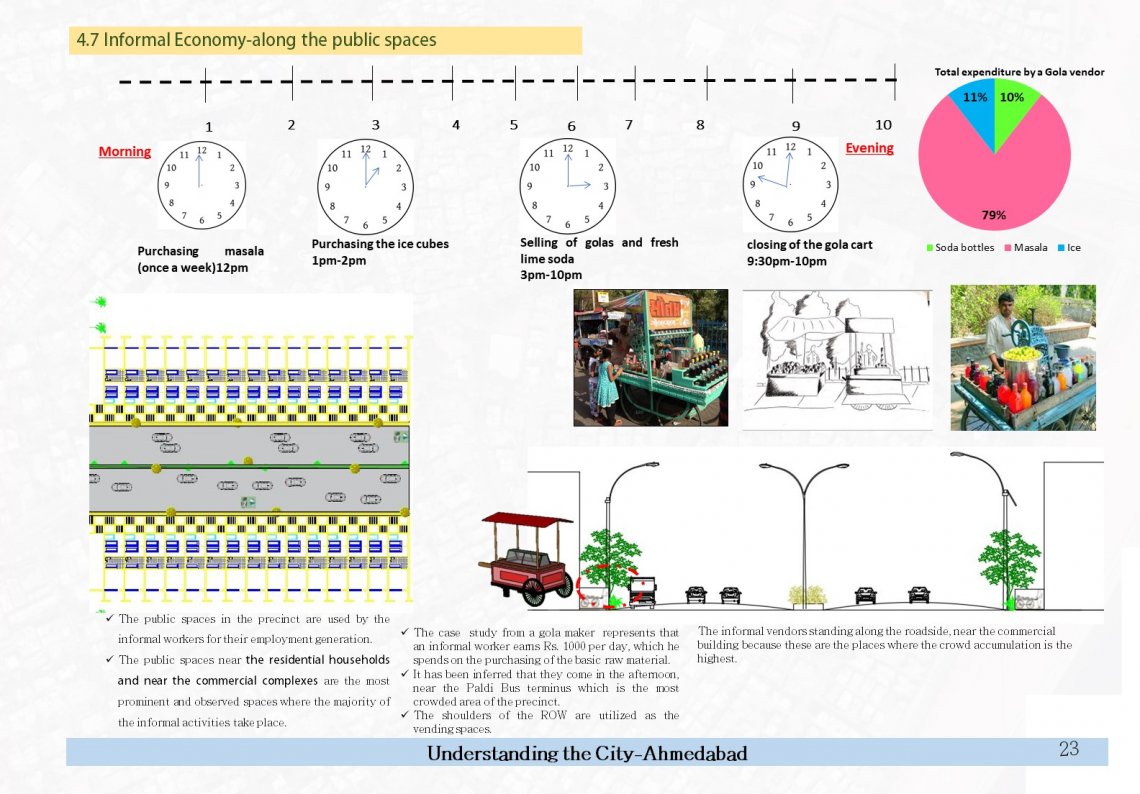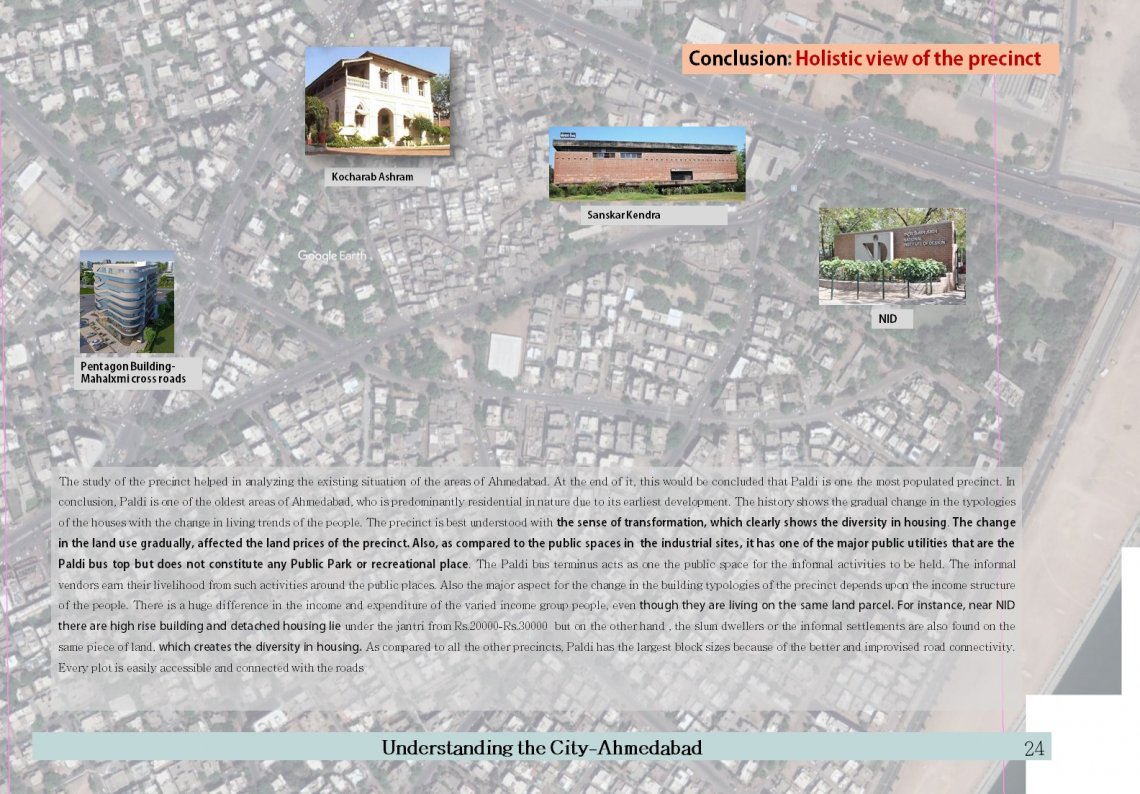Your browser is out-of-date!
For a richer surfing experience on our website, please update your browser. Update my browser now!
For a richer surfing experience on our website, please update your browser. Update my browser now!
Cities act as the growth engines which is seen in the phenomenon of their inbuilt activities, changes in the structure of employment and the formation of the powerful private public partnerships. To study the Ahmadabad city, every student was assigned with the respective precinct which covers the area of 1 sq.Km . The key objective of the studio is to understand the basic tools and factors of the urban area development. While studying the whole city, Paldi was studied in detail and every aspect was analysed which include the street connectivity, population density, infrastructural activities. Paldi is an affluent area located in South Western part of Ahmedabad. It is well known for its institutions and serves the best institutional services like Public transportation, Education etc. Further, Paldi is one the predominantly residential area which started developing during the pre-independence phase in 1916’s and with emergence of the Paldi and Kocharab gaam. The precinct can be seen as ‘The Transformation of Neighbourhood’ since it has seen the diversity in the housing typologies. Because of the diversity in housing typologies , transformation of the neighbourhood becomes a central analysis in understanding the precinct. Earlier the land parcels were occupied by the slum dwellers, whose lands were sold off under the political pressure to cater the demands of medium and higher income residents.
